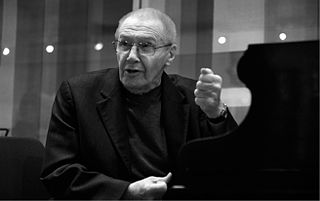
György Kurtág is a Hungarian classical composer and pianist. He was an academic teacher of piano at the Franz Liszt Academy of Music from 1967, later also of chamber music, and taught until 1993.

Ernő Rubik is a Hungarian inventor, architect and professor of architecture. He is best known for the invention of mechanical puzzles including the Rubik's Cube (1974), Rubik's Magic, Rubik's Magic: Master Edition, and Rubik's Snake.

George Charles de Hevesy was a Hungarian radiochemist and Nobel Prize in Chemistry laureate, recognized in 1943 for his key role in the development of radioactive tracers to study chemical processes such as in the metabolism of animals. He also co-discovered the element hafnium.

Philipp Eduard Anton von Lenard was a Hungarian-born German physicist and the winner of the Nobel Prize for Physics in 1905 for his work on cathode rays and the discovery of many of their properties. One of his most important contributions was the experimental realization of the photoelectric effect. He discovered that the energy (speed) of the electrons ejected from a cathode depends only on the wavelength, and not the intensity of, the incident light.
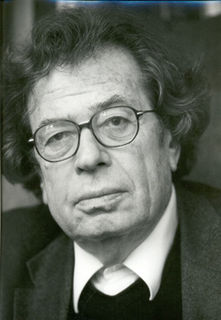
György (George) Konrád was a Hungarian novelist and essayist, known as an advocate of individual freedom.

George Andrew Olah was a Hungarian and American chemist. His research involved the generation and reactivity of carbocations via superacids. For this research, Olah was awarded a Nobel Prize in Chemistry in 1994 "for his contribution to carbocation chemistry." He was also awarded the Priestley Medal, the highest honor granted by the American Chemical Society and F.A. Cotton Medal for Excellence in Chemical Research of the American Chemical Society in 1996. According to György Marx he was one of The Martians.
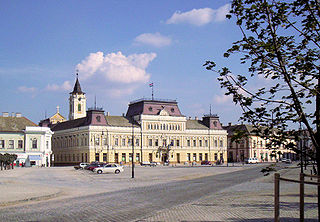
Baja is a city in Bács-Kiskun County, southern Hungary. It is the second largest city in the county, after the county seat at Kecskemét, and is home to some 35,000 people. Baja is the seat of the Baja municipality.

Bács-Kiskun is a county located in southern Hungary. It was created as a result of World War II, merging the pre war Bács-Bodrog and the southern parts of Pest-Pilis-Solt-Kiskun counties. With an area of 8,445 km2, Bács-Kiskun is the largest county in the country. The terrain is mostly flat with slight emergences around Baja. The county seat and largest city of Bács-Kiskun is Kecskemét.
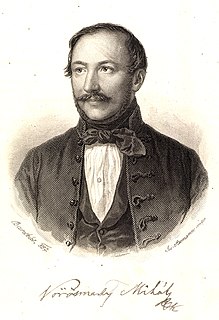
Mihály Vörösmarty was an important Hungarian poet and dramatist.

George Szirtes is a British poet and translator from the Hungarian language into English. Originally from Hungary, he has lived in the United Kingdom for most of his life after coming to the country as a refugee at the age of eight. Szirtes was a judge for the 2017 Griffin Poetry Prize.

László Lovász is a Hungarian mathematician, best known for his work in combinatorics, for which he was awarded the Wolf Prize and the Knuth Prize in 1999, and the Kyoto Prize in 2010. He was the president of the Hungarian Academy of Sciences between 2014 and 2020. He served as president of the International Mathematical Union between January 1, 2007 and December 31, 2010.

Ödön Pártos [alternate transcription in English: Oedoen Partos, Hungarian: Pártos Ödön, Hebrew: עֵדֶן פרטוש ] was a Hungarian-Israeli violist and composer. A recipient of the Israel Prize, he taught and served as director of the Rubin Academy of Music, now known as the Buchmann-Mehta School of Music in Tel Aviv.

Ede Reményi or Eduard Reményi was a Hungarian violinist and composer. His birth date is disputed, and variously given from 1828-1830.

Iván Fischer is a Hungarian conductor and composer.

László Krasznahorkai is a Hungarian novelist and screenwriter known for difficult and demanding novels, often labeled postmodern, with dystopian and melancholic themes. Several of his works, notably his novels Satantango and The Melancholy of Resistance, have been turned into feature films by Hungarian film director Béla Tarr.
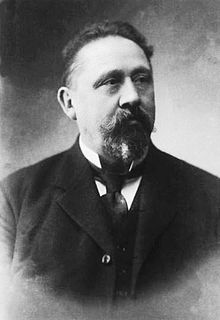
Ignác Alpár József was a Hungarian architect.
György Pauk is a Hungarian violinist, chamber musician and music pedagogue.
Juhász Gyula was a Hungarian sculptor and medallist.
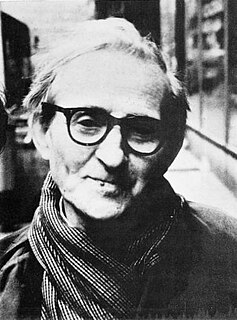
Ferenc Mérei was a Hungarian psychologist and educator.

Pál Pátzay (1896-1979) was a Hungarian sculptor who was named a deputy by a transitional Hungarian government in 1945. He made a statue memorializing Raoul Wallenberg's fight against Nazism, which was later removed then reinterpreted by the Soviets as medical science fighting disease.



















